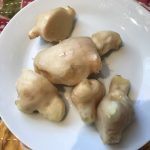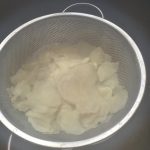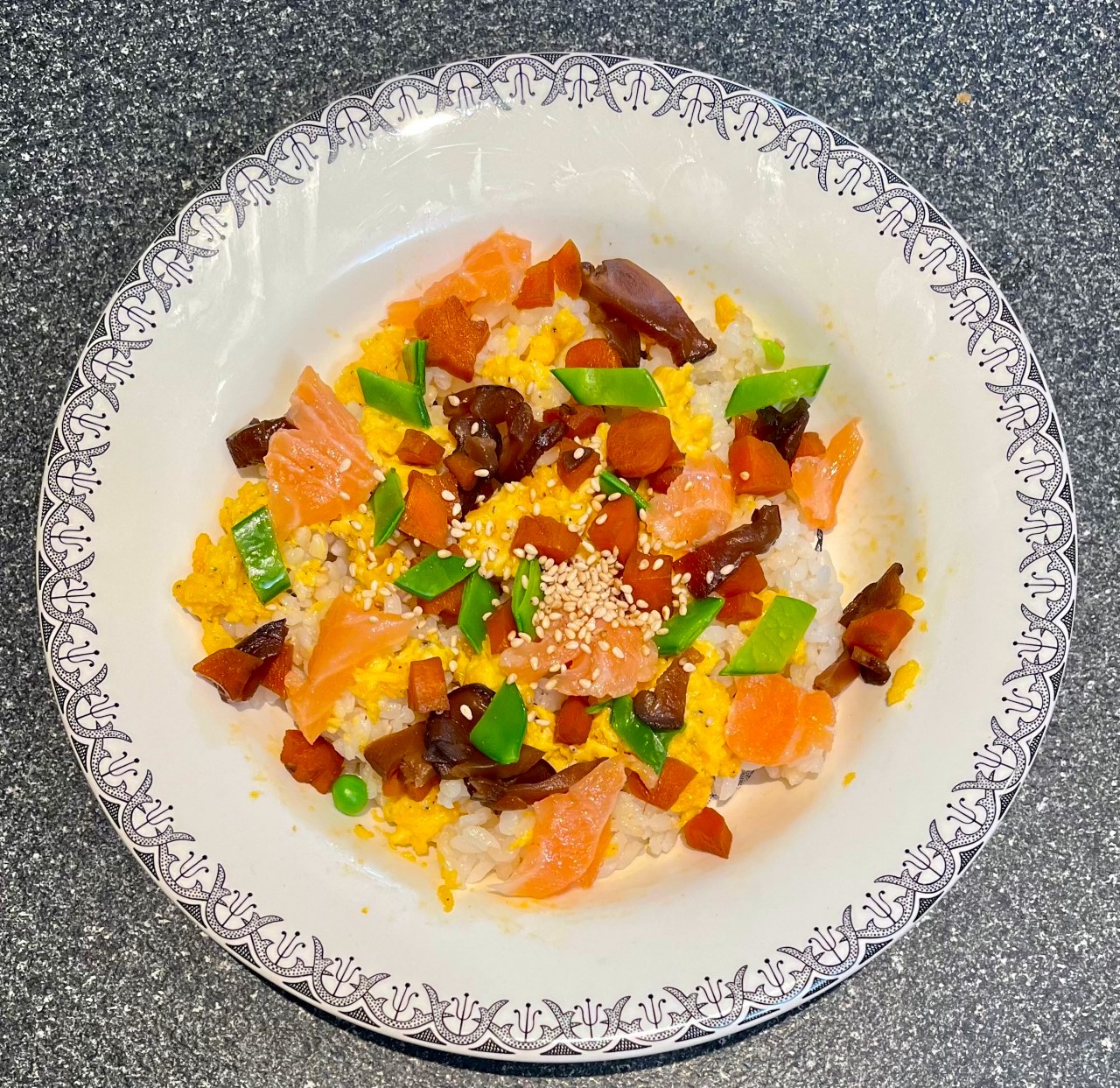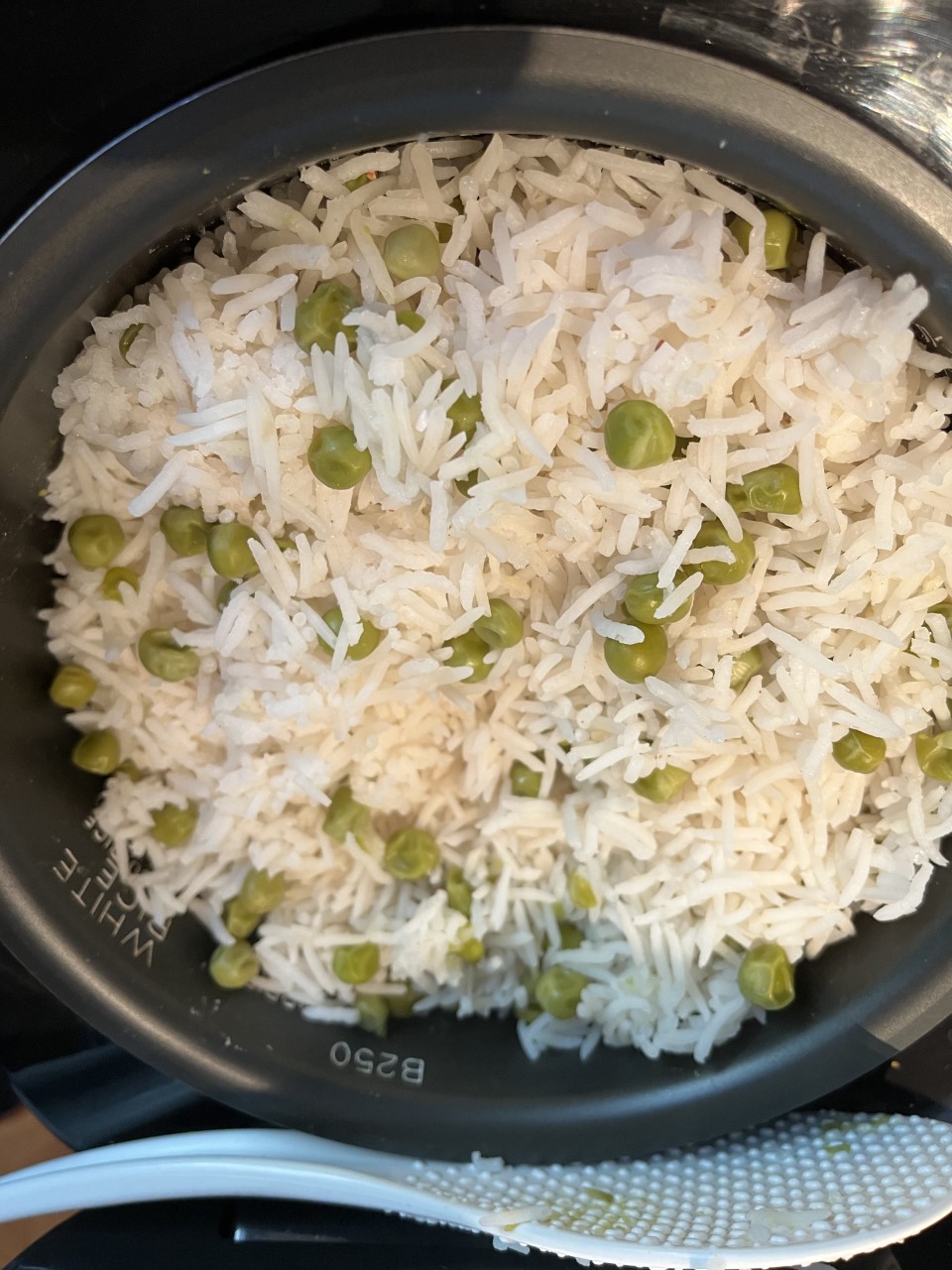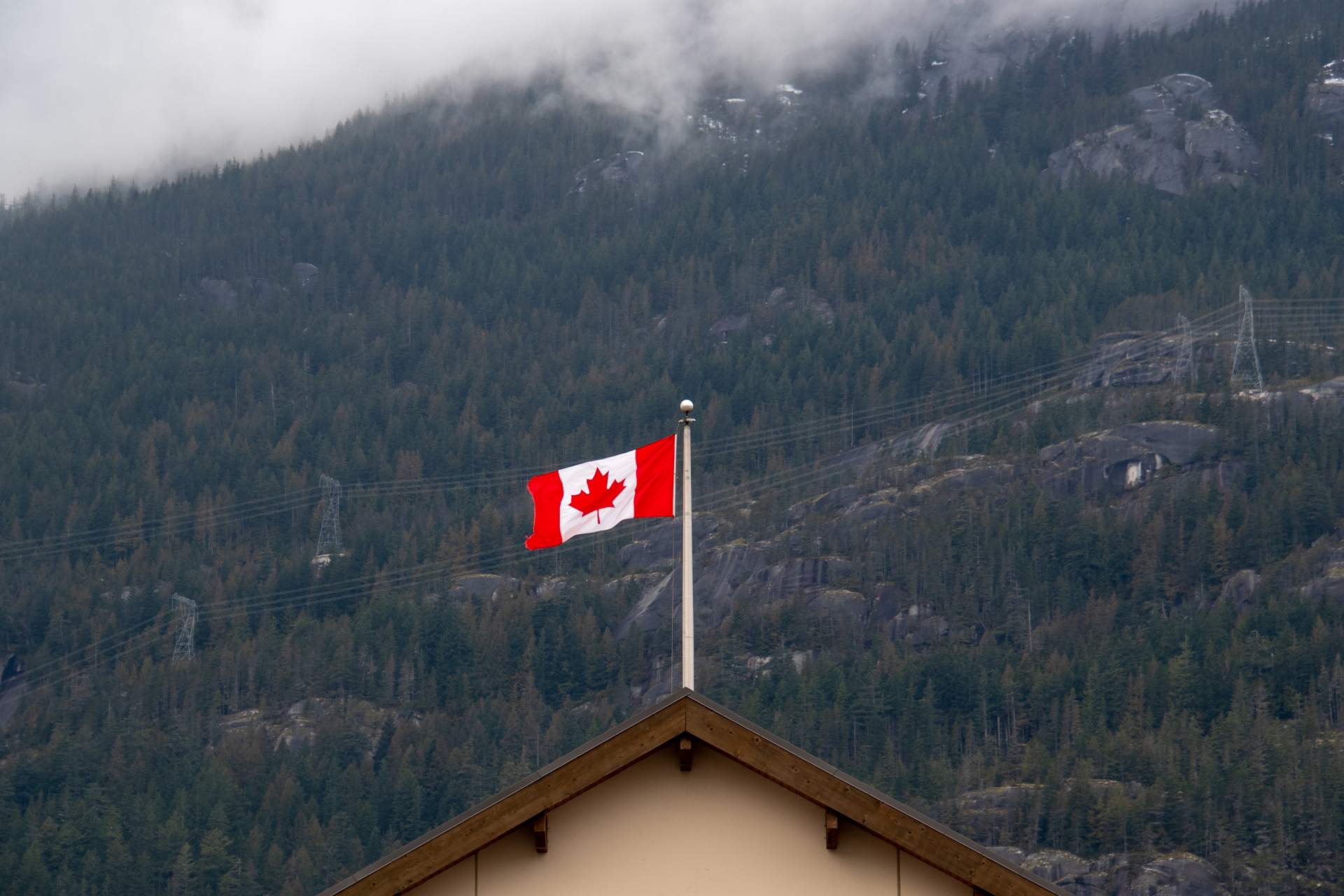ふりがな付き和文が英文の下にございます。/ the Japanese translation with furigana on all Chinese characters is below the English post.
How to Make “Gari” or the Sweet Ginger Pickles
Contents 1. What is ”gari"? 2. Ingredients 3. Recipe 4. Notes 5. The usages of “gari” 6. If you have extra sweet vinegar? The Japanese translation
1. What is “gari”?
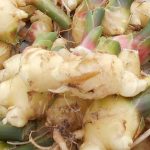
We made “gari” at home using the seasonal fresh, young ginger we found in Japan.
“Gari” is the pale pink or light yellow, thinly-sliced, sweet-sour ginger pickles which accompany your sushi.
It used to be a word used among professional sushi chefs. The word “gari” or “gari-gari” means crunchy. It mimics and describes the sound or the way it feels when we eat it. This kind of word is called “onomatopoeia”.
When it is not used as a sushi accompaniment, we can also use a more straightforward name, “shooga no amazu-zuke”. It means “sweet ginger pickles”.
You can quickly make delicious “gari” if you have ginger, vinegar and sugar. Unlike store-bought “gari”, we know exactly what is in it.
2. Ingredients
- Fresh ginger root※1, about half pound (225 grams)
- Salt, 1.5 teaspoons (7.5 cc or cubic centimeters)
- Rice vinegar※2, 1/2 Cup in the US measurement (120 ml)
- Sugar, about 3 Tablespoons (45 cc)
3. Recipe
(1) Wash and separate the bent parts of the fresh ginger to make peeling easier. Then scrape the peel off with a spoon. (If you are using very young ginger, you don’t have to peel except the dirty, hard parts. Leave the pink tips, if any※3.)
(2) Thinly slice lengthwise (along the fiber), at 1 to 2 mm (1/24-1/12 inch) thickness. A mandolin is helpful, but if you use one we strongly recommend that you use a small cover for the ginger, or a glove to protect your fingertips. Sprinkle salt over the sliced ginger and mix※4.
(3) Pour boiling water over the ginger and stir quickly. Leave for 2-3 minutes and drain in a colander※5. When the ginger has cooled enough, press and wring with your hands or a paper towel to drain the excess water out. Try not to tear the slices.
(4) Combine the vinegar and sugar※6, and put the ginger slices in the marinade loosening the pieces※7. You can eat it in a couple of hours. Refrigerate and use in about a month.
4. Notes
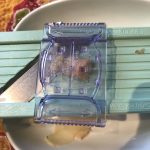
※1 You can use common, brown year-old ginger. However, if you see seasonal young ginger (with much whiter skin) from spring to early summer, try to use it. The difference between the old ginger and young ginger: The young one is less spicy. Also, the young one may have pink tips which will make the entire pickles pale pink and add fun. Compared to the old ginger, young ginger contains more water and so it is tenderer, but for the same reason, pickles made with young ginger don’t last as long as the ones made with old one.
※2 We were successful with white wine vinegar with higher acidity.
※3 The pink parts are hard, but when soaked in vinegar, they give the whole ginger a nice, natural pink color. The taste is the same if there are no pink tips.
※4 Some recipes tell you to add salt after blanching the ginger. If you do this, wait for a couple of minutes and wring water thoroughly.
※5 To reduce the spiciness even more, you can boil the ginger in hot water for a few minutes and drain. Bite on a piece and check the spiciness, and repeat blanching if necessary. The longer you soak or blanch, the less spicy it becomes.
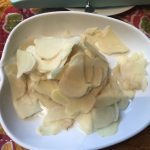
※6 The basic proportion of {vinegar : sugar} is {5 : 2}. We tried {3 : 1} and {3 : 1 and a pinch}, and they all work. You can make a little more marinade so that you can use it for something else (See Section 6. The usages of the sweet vinegar).
※7 If you prefer lower acidity in the marinade, you can make it by bringing the vinegar-sugar mixture to a boil on the stovetop or in the microwave oven. Do not cover the pan or container but let the acid evaporate.
5. The usages of “gari”
In a traditional sushi restaurant, they always serve “gari”, wasabi and green tea. It is said that these kill germs and prevent food poisoning.
“Gari” is known to cleanse the palate after we have eaten fatty fish on sushi and go to less fatty, delicate tasting fish or food. For the same purpose, the sweet-pickled ginger often accompanies savory, oily food, rich in taste.
For example, yaki-soba (pan-fried noodles) and pan-seared chicken or any kind of meat or fish with teri-yaki (soy sauce/rice wine/sugar) sauce.
We also like it on hot, boiled rice (here we mean Japonica rice but it should work with any kind of rice as well), with a sprinkle of roasted white sesame seeds.
Some people use just a part of fresh ginger for the day’s cooking, keep some in the fridge and then marinate the rest like this.
6. If you have extra sweet vinegar
You can pour the sweet-sour marinade on hot, freshly cooked rice (in this, we recommend Japonica rice, or the stickier short grains) and mix as you fluff it up. You will instantly have a delicious sweet sushi rice. It is good just as it is!
Cucumber, turnip, radish, and other vegetables can be pickled in this marinade. Also, you can reduce the spiciness of raw onion slices by soaking them in it for about 10 minutes.
The marinade can dress a salad if you mix it with a little oil and salt or soy sauce.
There are people who drink black vinegar or citric acid solution for health. Likewise, some drink this marinade diluted with water or seltzer water.
Explore and enjoy!
[End of the English post]
「ガリ」または新ショウガの甘酢漬け
目次 1. ガリとは何か? 2. 材料 3. 作り方 4. 備考 5. ガリの使い方 6. 甘酢が残ったら?
1.ガリとは何か?
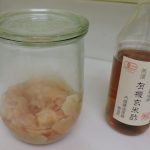
日本で季節の新ショウガが手に入ったので、「ガリ」を作ってみました。
「ガリ」とは、お寿司についてくる、薄いピンク色や黄色の薄切りショウガのピクルスです。
もともとは寿司職人たちの言葉で、かじる音や食感が「ガリガリ」するのでこう呼ぶようになったそうです。オノマトペ(擬音語・擬態語)ですね。
普通の言葉では「ショウガの甘酢漬け」と言います。
ショウガ、酢、砂糖があれば、おいしい「ガリ」がすぐできます。お店で買ったものと違って、何でできているかわかります。
2.材料
- 根ショウガ※1 225グラム (米国の半ポンド) ぐらい
- 塩 小さじ1杯半 (7.5cc)
- 米酢※2 120cc (米国の半カップ)
- 砂糖 大さじ3杯 (45cc) ぐらい
3.作り方
(1)ショウガを洗い、曲がっているところがあれば切り離し、皮をむきやすくする。スプーンなどで皮をこそげ落とす (新ショウガの場合はむかなくてもよい。汚い、あるいは硬いところがあればそこだけむく。ピンクの所があれば少し残しておく※3)
(2)タテ方向に(繊維に沿って)薄切りにする。厚さは好みで1ミリから2ミリぐらい。マンドリンを使うと早いが、その場合はショウガを覆うものや防刃手袋を使うのがよい。塩を振り混ぜる※4。
(3)熱湯をかけてさっとかき混ぜ、二、三分おいてざるでお湯を切る※5。少し冷めたら、手かペーパータオルで押さえてよく水分を絞る。この時、ショウガを破らないよう気をつける。
(4)酢と砂糖を合わせて甘酢を作り※6 、ショウガをほぐしながら入れる。数時間で食べられるようになる。冷蔵庫で保存して、1ヶ月以内に食べ切る※7。
4.備考
※1 普通のひねショウガ(薄茶色のショウガ)でできますが、春から初夏にかけて、もし白っぽい新ショウガが出たら使ってみてください。ひねショウガと新ショウガの違いは、新ショウガの方が辛みが弱い。また、新ショウガにピンクの部分があれば、全体がピンク色に仕上がるのが楽しい。なお、新ショウガは水分が多いので、酢漬けにしてもひねショウガほどは持たないそうです。

※2 もっと酸っぱい白ワイン酢などでもおいしくできました。
※3 ピンクの部分は硬いが、酢に漬けると全体が自然にピンク色になる。味は同じ。
※4 ショウガをゆがいてから塩を振り混ぜる人もいる。塩を振ったら数分おいて水分をあらためて絞る。
※5 さらに辛みを除きたい場合は、ショウガを熱湯で数分ゆでる。一切れかじってみて辛さを確かめ、必要に応じて繰り返す。熱湯に漬ける時間やゆで時間が長いほど辛みが抜ける。
※6 甘酢の酢と砂糖の割合は基本的に5:2。3:1や3:1強でもおいしい。ここで漬け汁を多目に作っておいて、他のことに使ってもよい(6.甘酢の使い道参照)。
※7 酢の酸味を抑えたい場合は、小鍋に入れてコンロで、または電子レンジで、軽く沸騰させる。酸を飛ばすため蓋はしない。
5.ガリの使い方
お寿司屋さんでは必ず「ガリ」、ワサビ、緑茶が出てきますが、この三つには、殺菌作用があり、食中毒の予防になるのだそうです。
もちろん「ガリ」の大切な役目は、脂の強い魚の後に食べてより脂の少ない、あるいはデリケートな味の魚や食べ物を口にした時、口をさっぱりさせることです。同じ目的で、生姜の甘酢漬けは塩味で油っぽい、味の強い料理によく添えます。
例えば、焼きそばや、醤油・米酢・砂糖のたれをかけて照り焼きにした肉や魚。
私たちは、直接温かいご飯(ジャポニカ米でやっていますが、どんなお米でもおいしいと思います)に載せて、白ごまをかけて食べるのも好きです。
人によっては、ショウガの一部を料理に使って、一部は冷蔵庫に入れておいて、残りをこうして漬けます。
6.甘酢が残ったら?
漬け汁の甘酢は、炊き立てのご飯(ここではうるち米がお勧めです)に回しかけ、空気を混ぜ込むように混ぜると、甘めの酢めしになります。それだけでもおいしいです。
また、きゅうり、かぶ、ラディッシュなどを漬けこむとピクルスになります。サラダ用の玉ねぎスライスを10分ほど漬けておけば、辛みが少し抜けます。
好みの油や塩分を加えて、オリジナルのサラダドレッシングを作ってもおいしい。
また、健康のために黒酢やクエン酸水を飲む人がいますが、同じ目的でショウガを漬けた甘酢を水や炭酸水で割って飲む人もいます。
いろいろやってみてください。
[End of the Japanese post]

